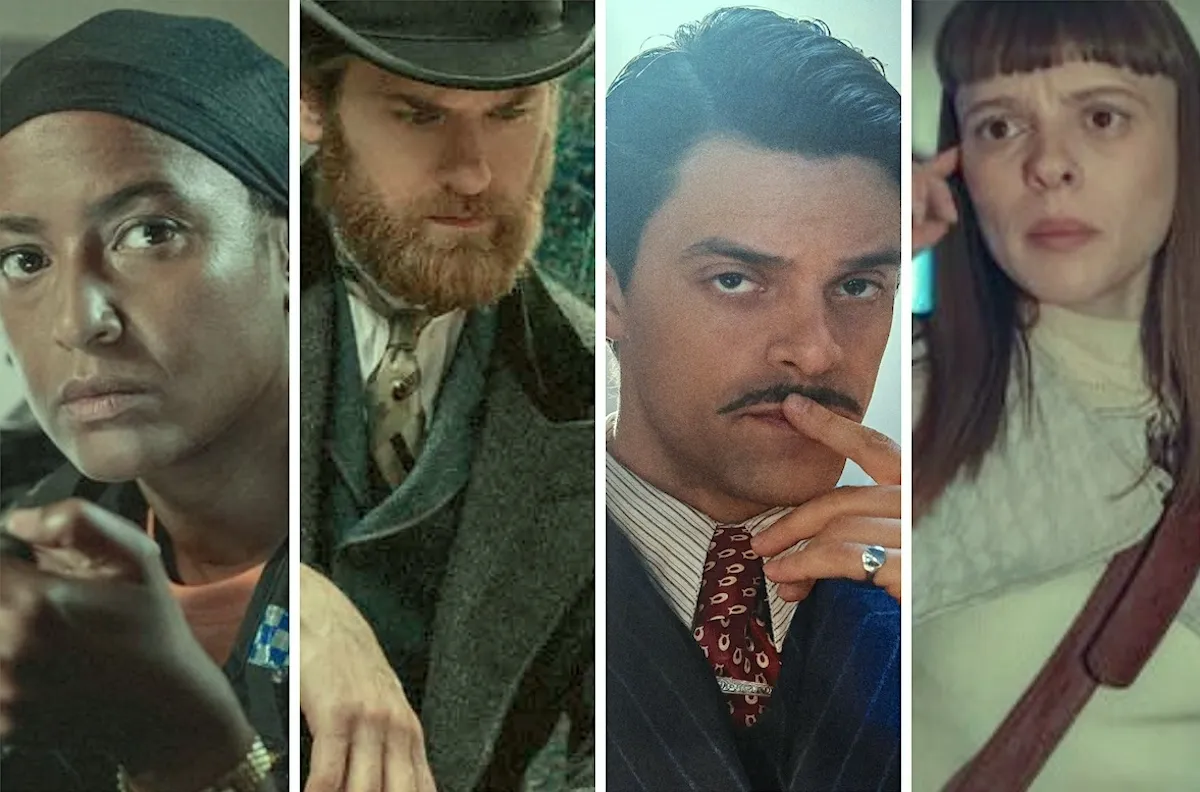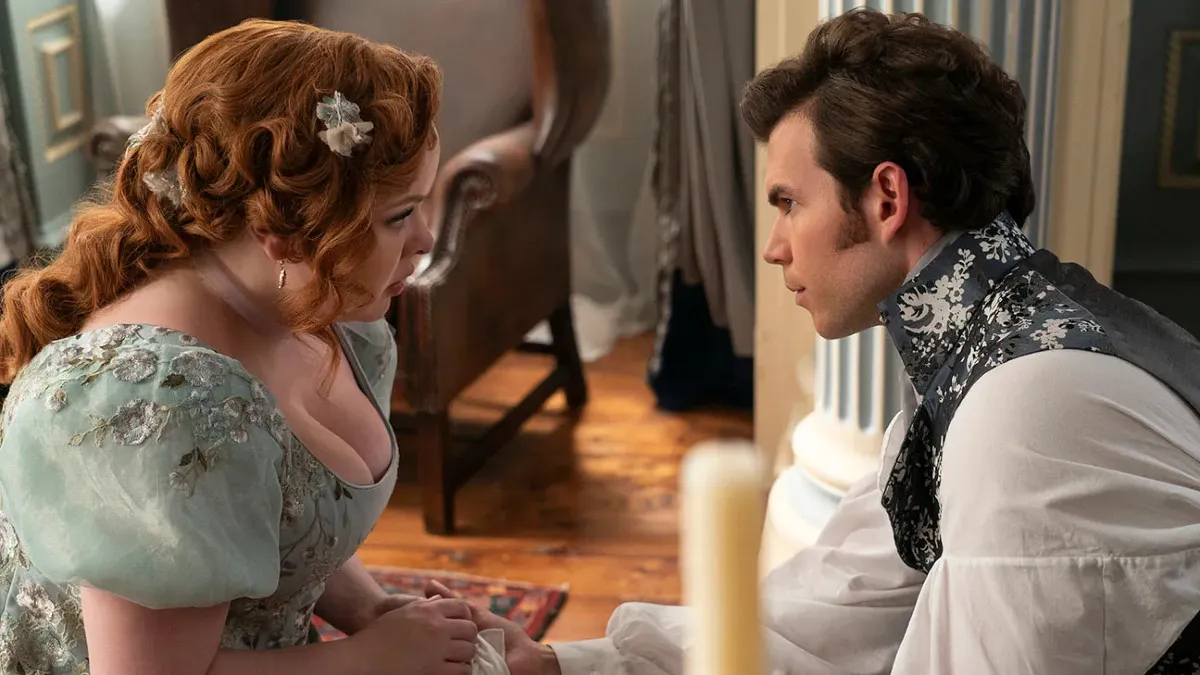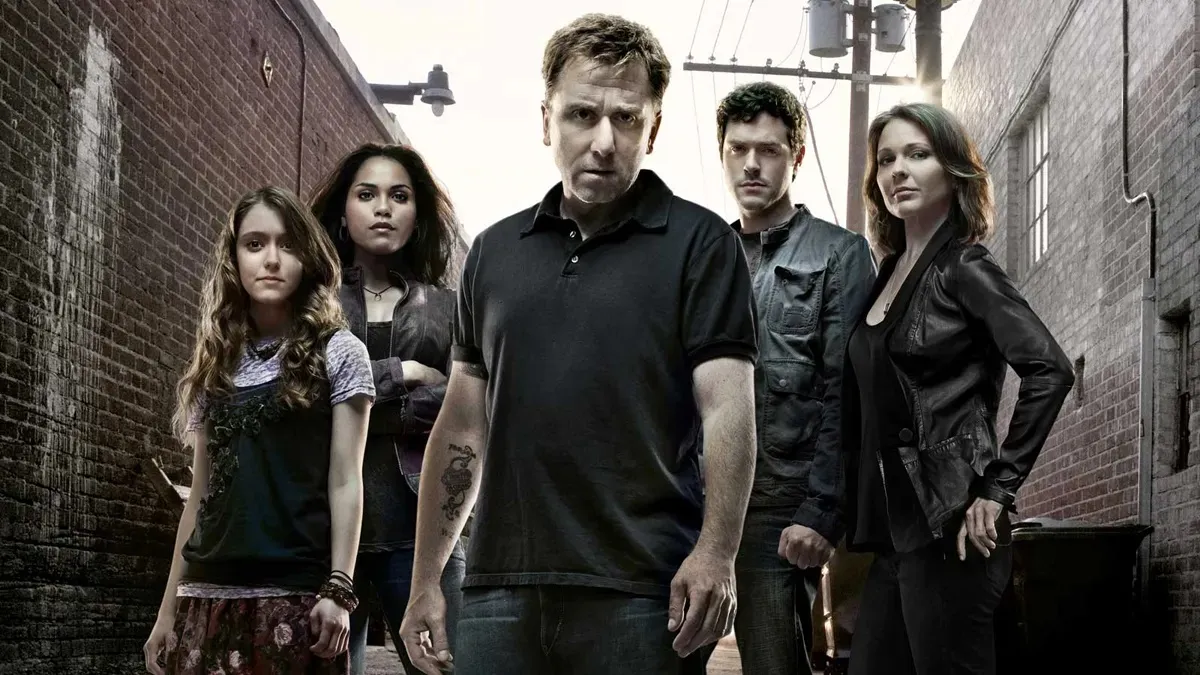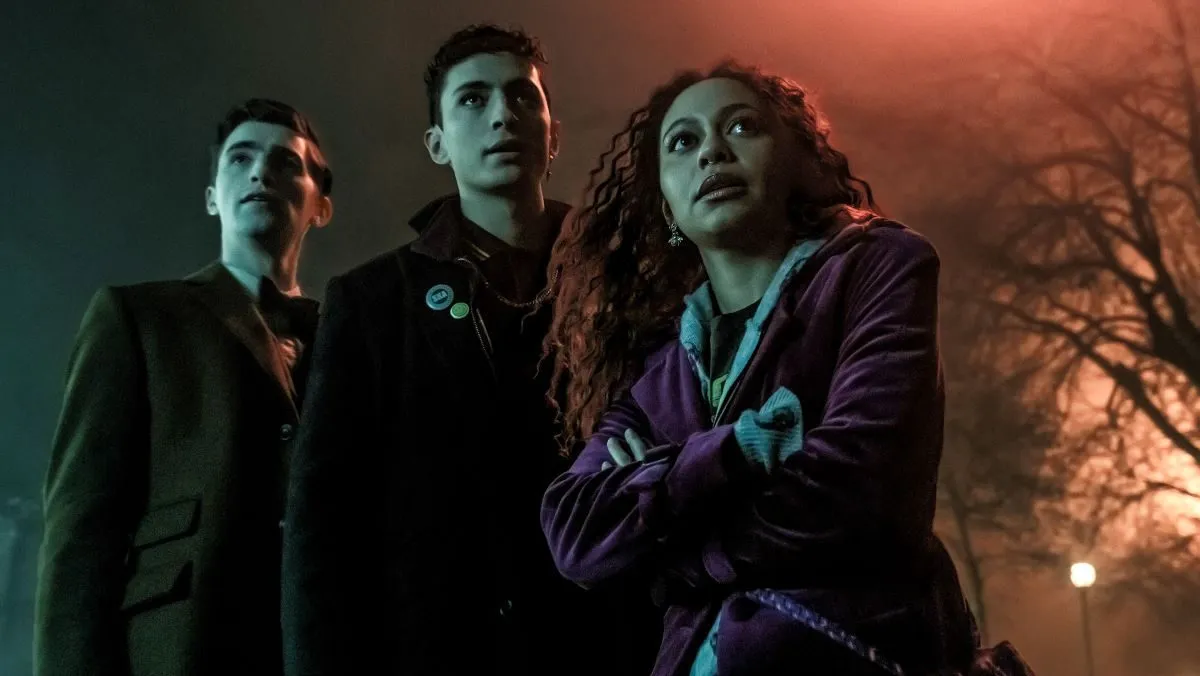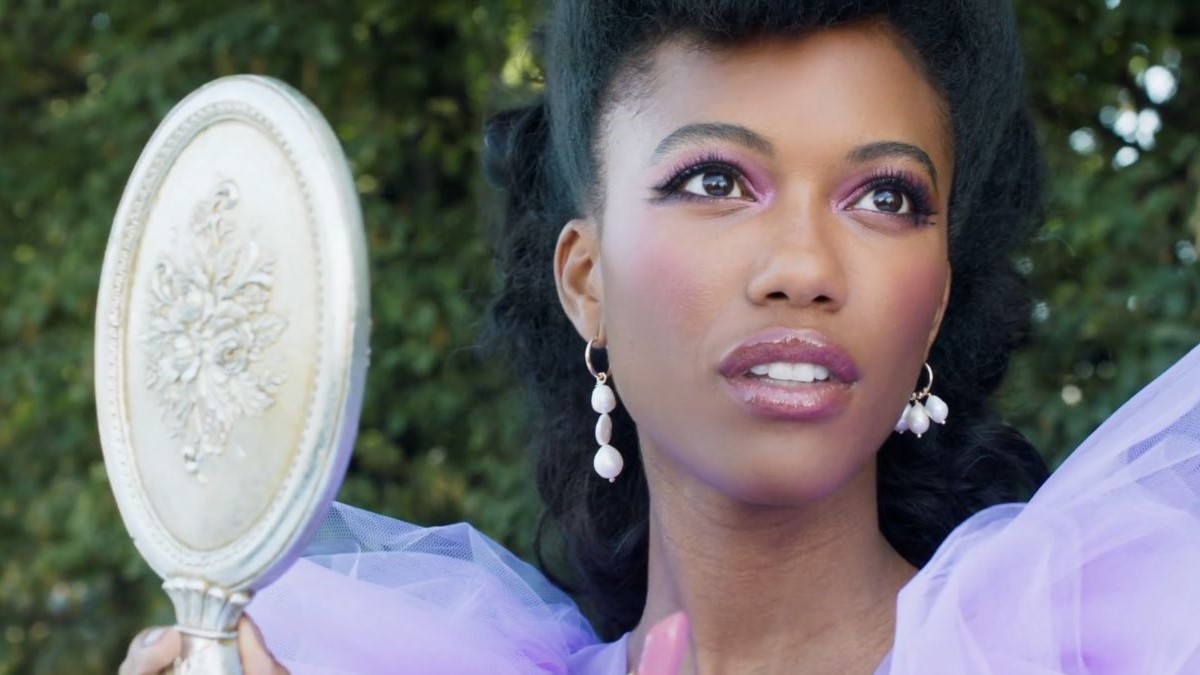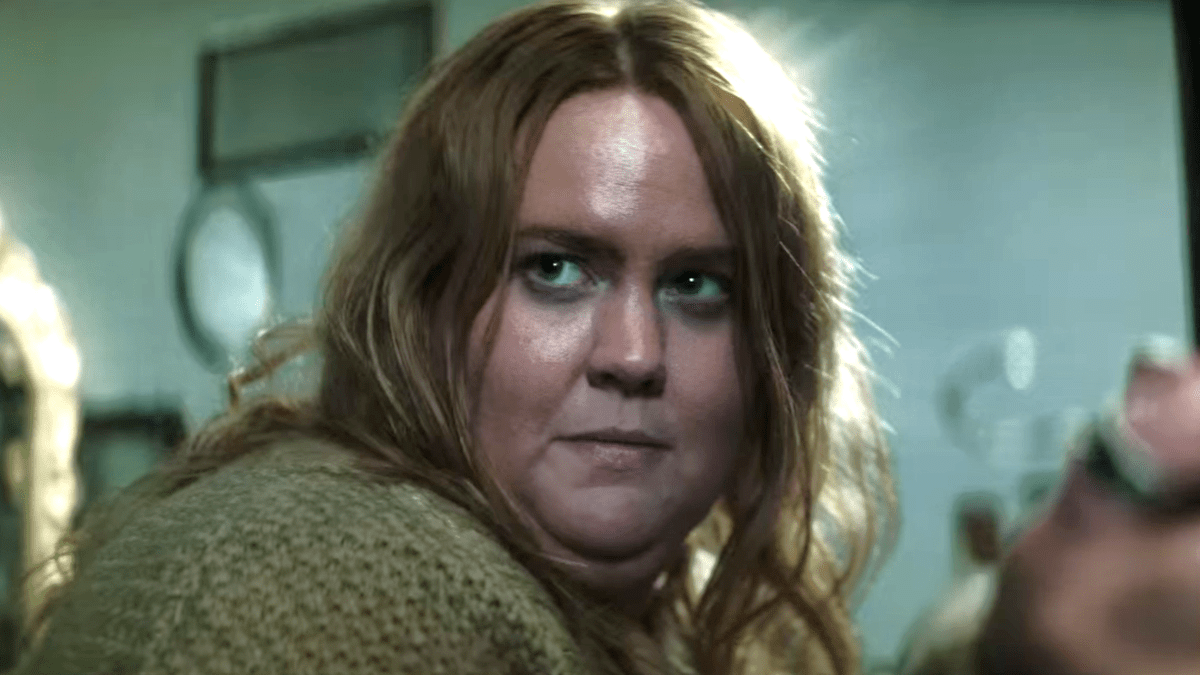I haven’t been able to stop thinking about the new limited series on Netflix, Bodies, since I binge-watched it in a frenzy. I consume a lot of media as a matter of course, but lately, I’ve been feeling burned out even when it comes to my favorites.
Enter Bodies, and I’m feeling invigorated about television again. It seems like they made this one just for me. Bodies is a sci-fi/mystery/thriller series adapted from the DC Vertigo graphic novel of the same name by Si Spencer, with art by Phil Winslade, Tula Lotay, Dean Ormston, and Meghan Hetrick. Sadly, Spencer passed in 2021, before he could see his vision come together into such a cohesive live-action whole. But I think he’d be proud of the results. The show, which spans eight episodes and four timelines, has a healthy 82% freshness from critics on Rotten Tomatoes, as well as an 80% score from audiences. On Netflix, Bodies has consistently stayed in the top ten since its October 19, 2023 debut.
“Four detectives, four time periods, and four dead bodies,” is Bodies’ comics tagline, highlighting the main premise: a naked body is discovered in a London alley. The twist? The same body is found in the same alley in London in four time periods, with life-changing implications for the detectives who take on the case in their respective eras, and world-changing implications for humanity.
Bodies features an exceptional cast that elevates the bizarre mystery to dazzling heights. Beyond the cast, my favorite element is the genre-defying nature of the series. It’s a historical drama, a detective procedural, and a science fiction romp, thus managing to encompass my preferred things to watch all in one. Other words the cast and creatives have used to describe the show: noir, dystopia, domestic drama, action-packed, multidimensional, multi-time-warped, mind-snapping. Bodies maintains independent—yet intriguingly interwoven—storylines in four different eras, sometimes all occurring simultaneously in a collage on one screen. The narratives unfold in 1890, 1941, 2023, and 2053, with each period richly drawn and sumptuously adorned.
I can’t say enough about the cast that illuminates these disparate storylines. The series is anchored by the stunningly good Amaka Okafor as dogged detective Shahara Hasan in 2023. Hasan’s discovery of the body in the alley leads her to a troubled teenager and a shadowy organization behind the scenes that appears to be orchestrating events on a massive scale.
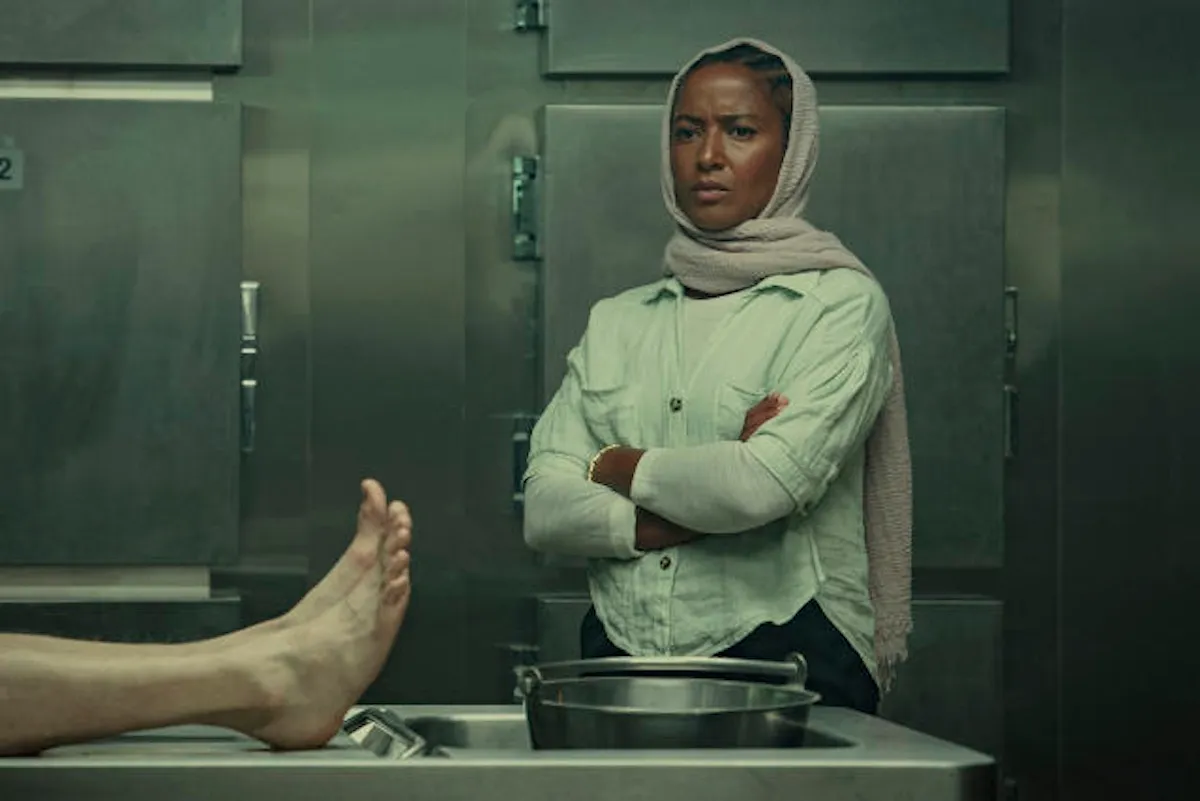
“It’s important to see yourself represented and not to see it as issue-based. When you grow up not white, you hardly ever see yourself as the centre of a story,” Okafor said in a Netflix Q&A. “When you see a show like this, where somebody who looks like you or has beliefs that you have is at the centre of the story, it allows you to properly be in the centre of your own life. It allows you to be properly engaged in society and not feel pushed out.” The women in Bodies are bold, compelling, and eschew being forced into too-defined boxes. The same holds for the men, making this series an excellent character study in the midst of a global, time-spanning conspiracy.
In 1890, Andor’s Kyle Soller plays detective Alfred Hillinghead—an unswerving officer and a man struggling with his sexuality in a dangerous time period for its realization—with sensitivity and grace. In 1941, detective Charles Whiteman has movie-star style and a seeming lack of scruples that masks a much more complicated and fascinating man underneath. A Jewish detective on the force during the London Blitz in World War II, Whiteman is complex, charismatic, and impossible to pin down. Played with both winking charm and agonized conflict by Jacob Fortune-Lloyd, Whiteman fast became a standout for me. And in 2053, in a strange future shaped by the events of the other detectives’ pasts, steely detective Iris Maplewood (Shira Haas) is the most removed from our own known universe while becoming key to unlocking the entangled timelines.
Mention must be made of Stephen Graham, who spans the years here as Bodies’ lynchpin. Veteran actor Graham has been seen in movies like Snatch and Gangs of New York, and on TV in a million roles, often period pieces; you’ll recognize him at once, yet his chameleon-like ability to fit into every era conceivable has never been put to better use. He’s threatening, he’s sympathetic, he’s mysterious, he’s wretched, he’s heartbreaking, he just wants to be loved, he is, like Bodies, a little bit of everything.
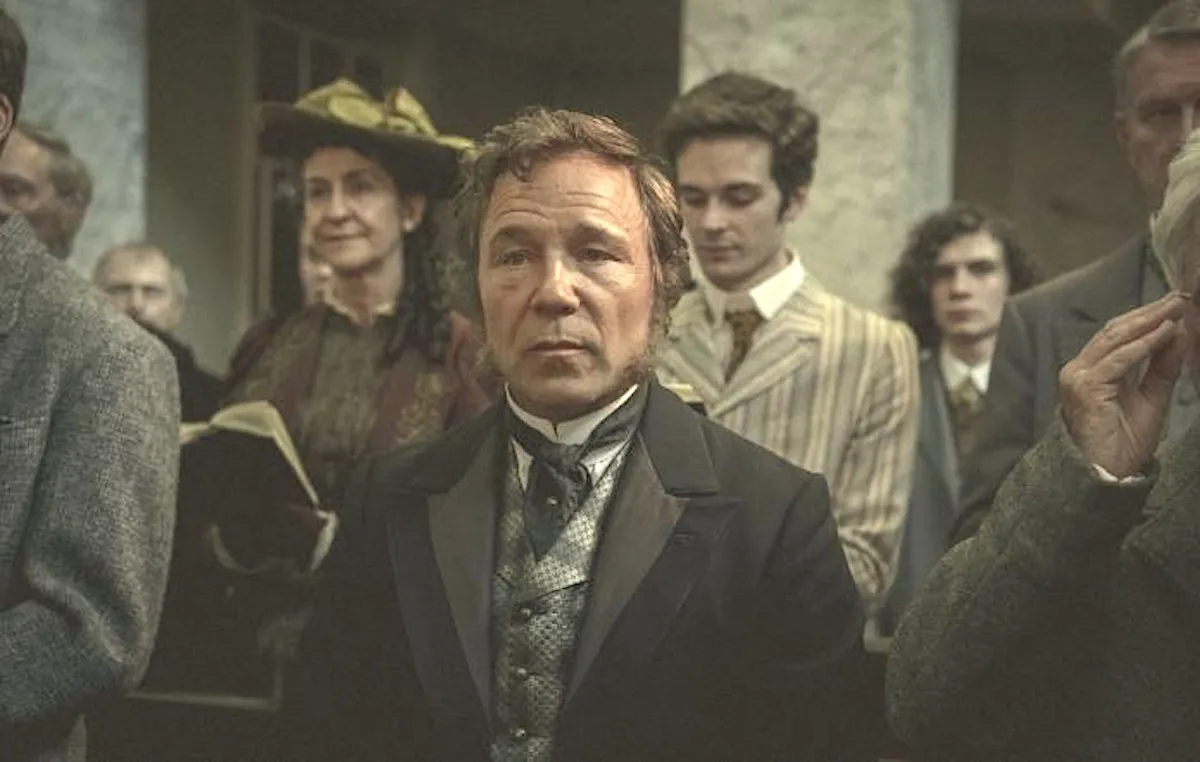
Further praise is due to the incredible supporting cast: George Parker as Henry Ashe, a dashing journalist who helps Hillinghead in 1890, Derek Riddell as DCI Calloway, perhaps the only policeman on the straight and narrow in 1941, Michael Jibson as a detective with a secret in 2023, Greta Scacchi and Synnøve Karlsen in a vital dual role in two eras, Gabriel Howell as a neglected youth whose pain can alter society, Chloe Raphael as a neglected youth who alters everything for one detective, and the doe-eyed Tom Mothersdale as “the body” that starts it all, over and over and over and over again.
Bodies can be slow-going at the start; it takes a little while for the show to rev up to meet its central conceit, but it’s worth the wait. And, yes, if you think too much about some of the time-travel paradoxes at play and how the “science” works here, you may spin out. But if you go with the flow, you’re in for some of the most entertaining television I’ve watched in ages—I couldn’t wait to finish the series once I started. It’s been a long time since I felt that sense of excitement over something streaming.
While the scope of the Bodies production sprawls mightily, it’s held together by strong scripts from creator Paul Tomalin and Danusia Samal, confident direction by Marco Kreuzpaintner and Haolu Wang, and award-worthy production, set, and costume design by Richard Bullock, Tanya Bowd, and Rachel Walsh, respectively. Social commentary is well-executed in every century without the show being, as Okafor put it, “issue-based.” It touches on sexuality, disability, racism, sexism, antisemitism, police corruption, environmentalism, class, corporate greed, and more, working these themes in organically as they crop up in different shapes across time.
I’ve been recommending Bodies to everyone I know, since it has elements that will appeal to friends who appreciate different genres. Now I’m recommending it to you. Please do yourself a favor and tune in, especially if you’re feeling burned out on other TV offerings these days. I need more people to talk to about what I saw unravel on screen. I promise it’s like nothing you’ve watched before.
(images: Netflix)



